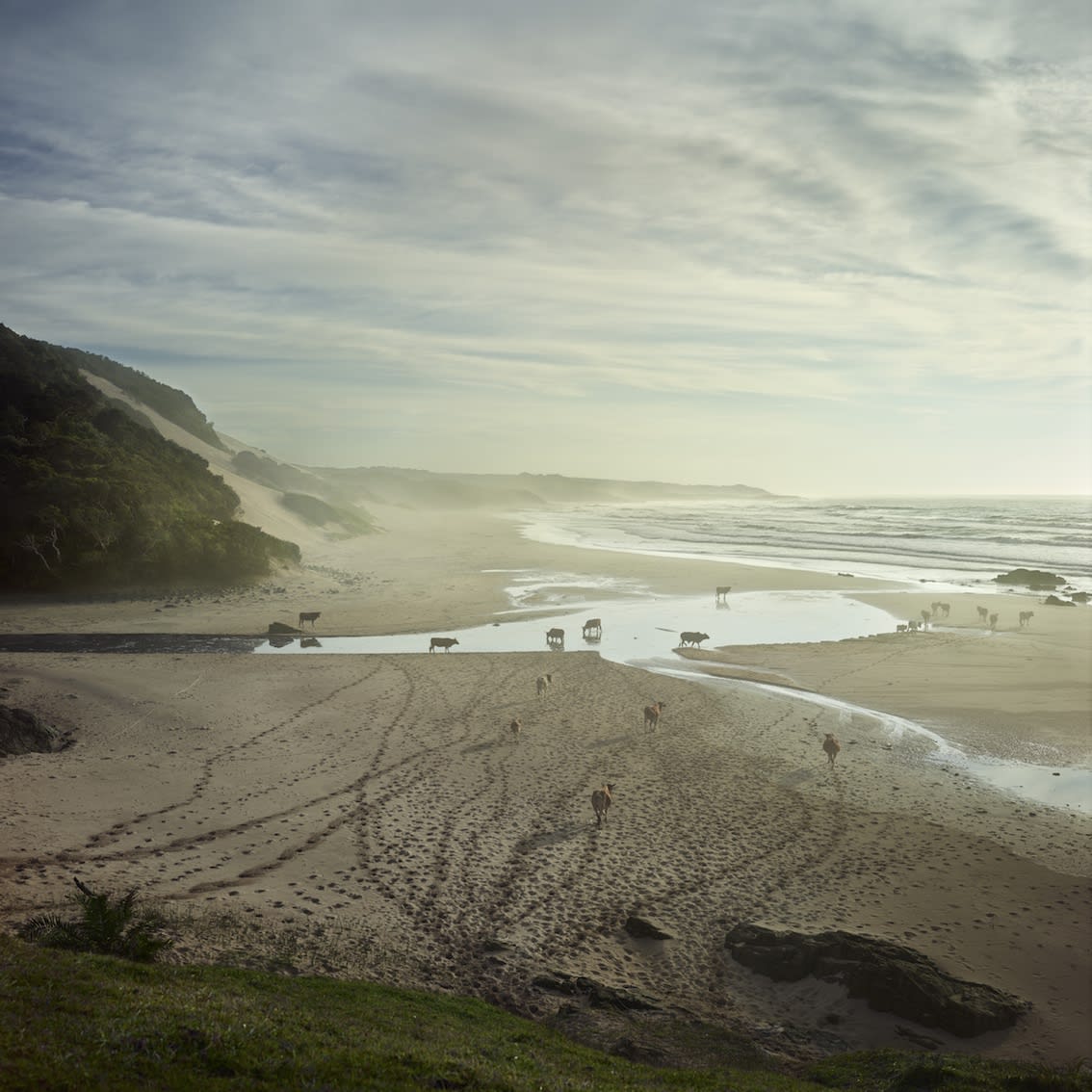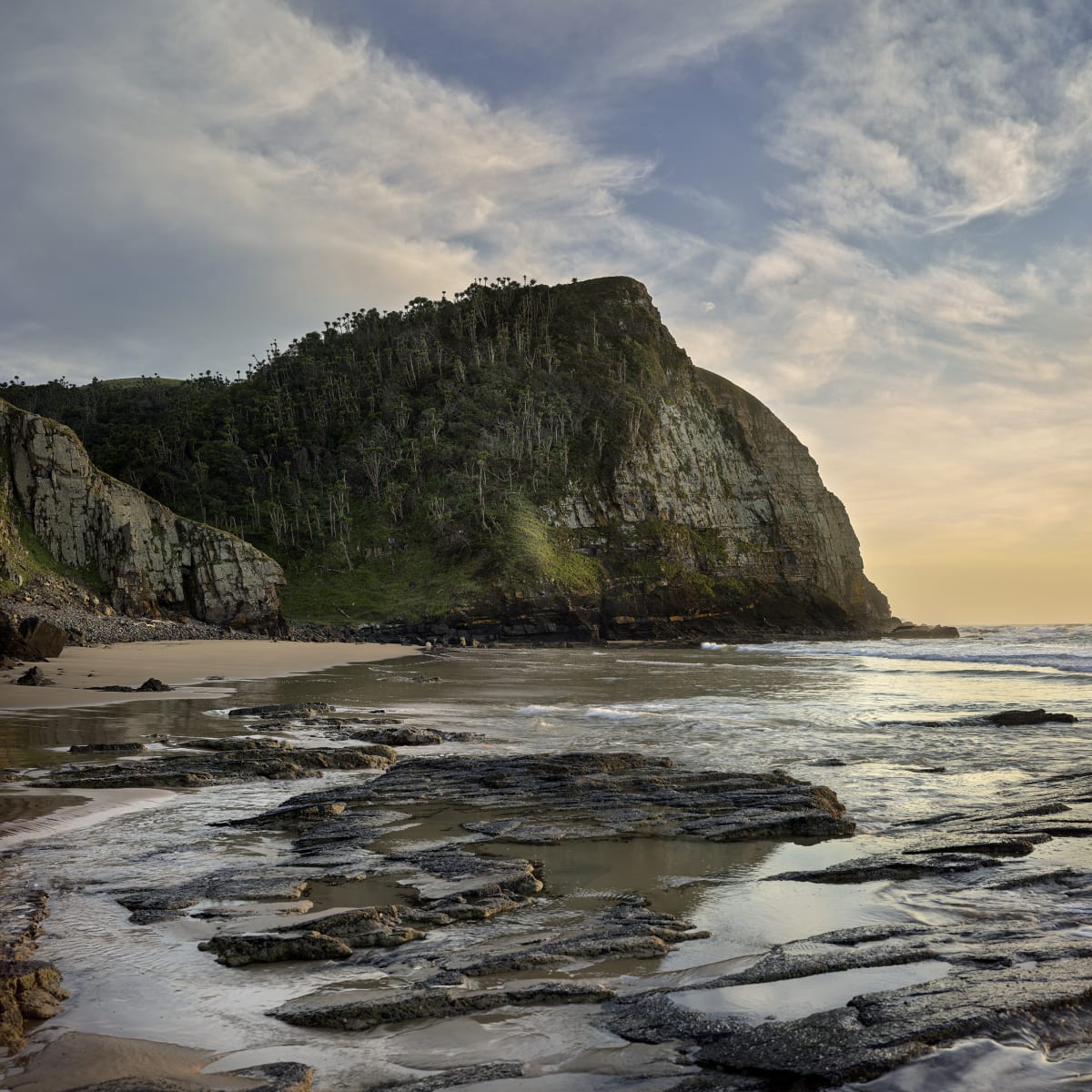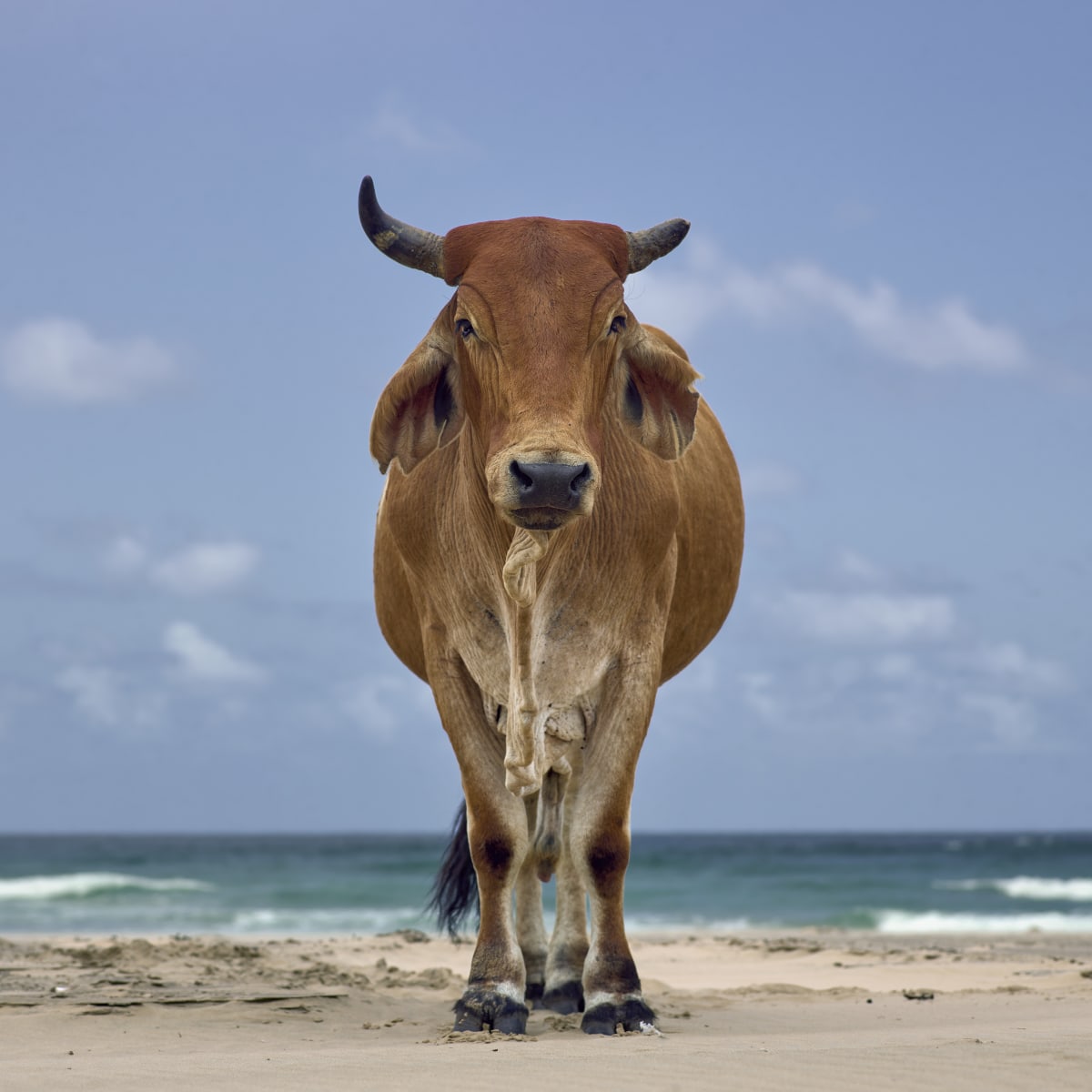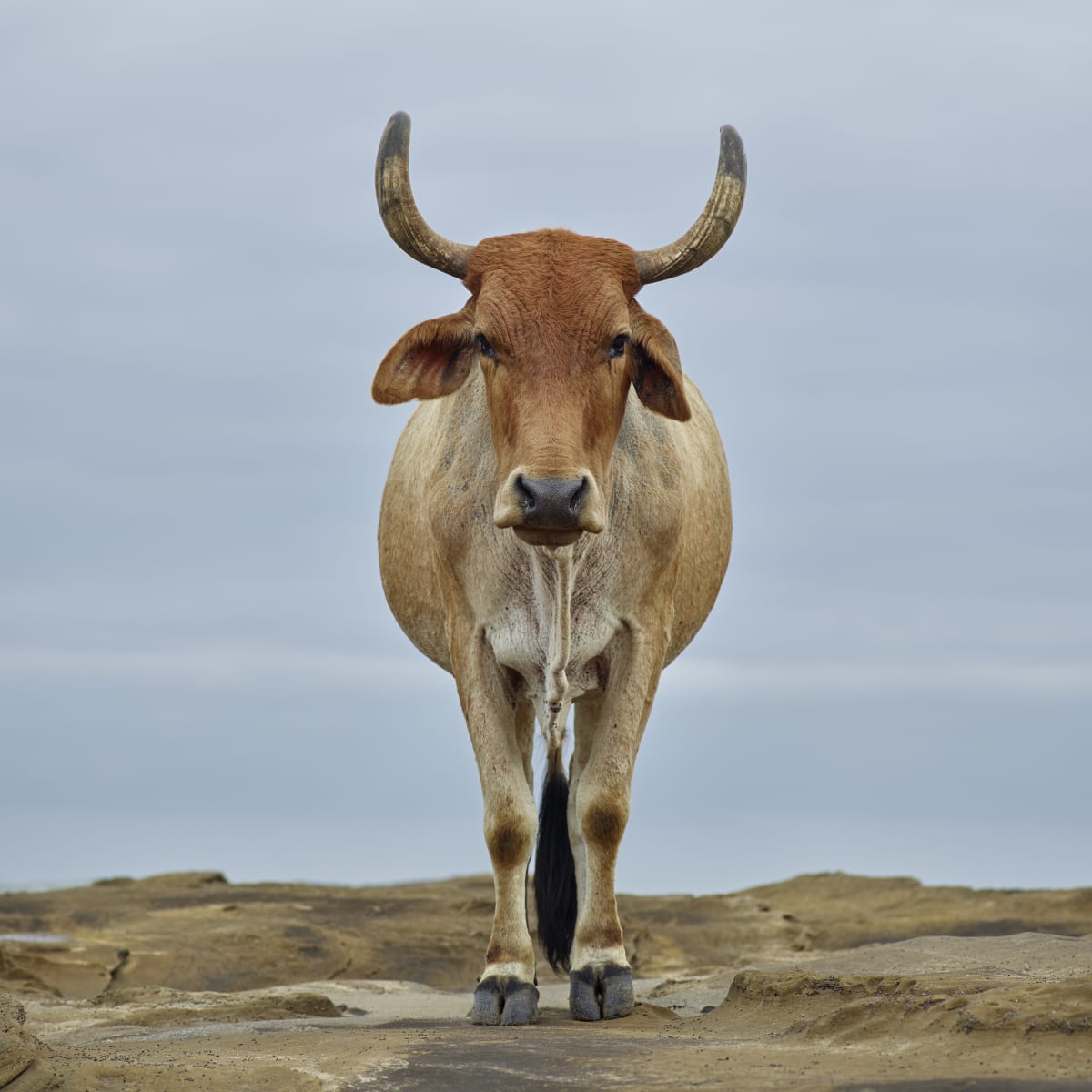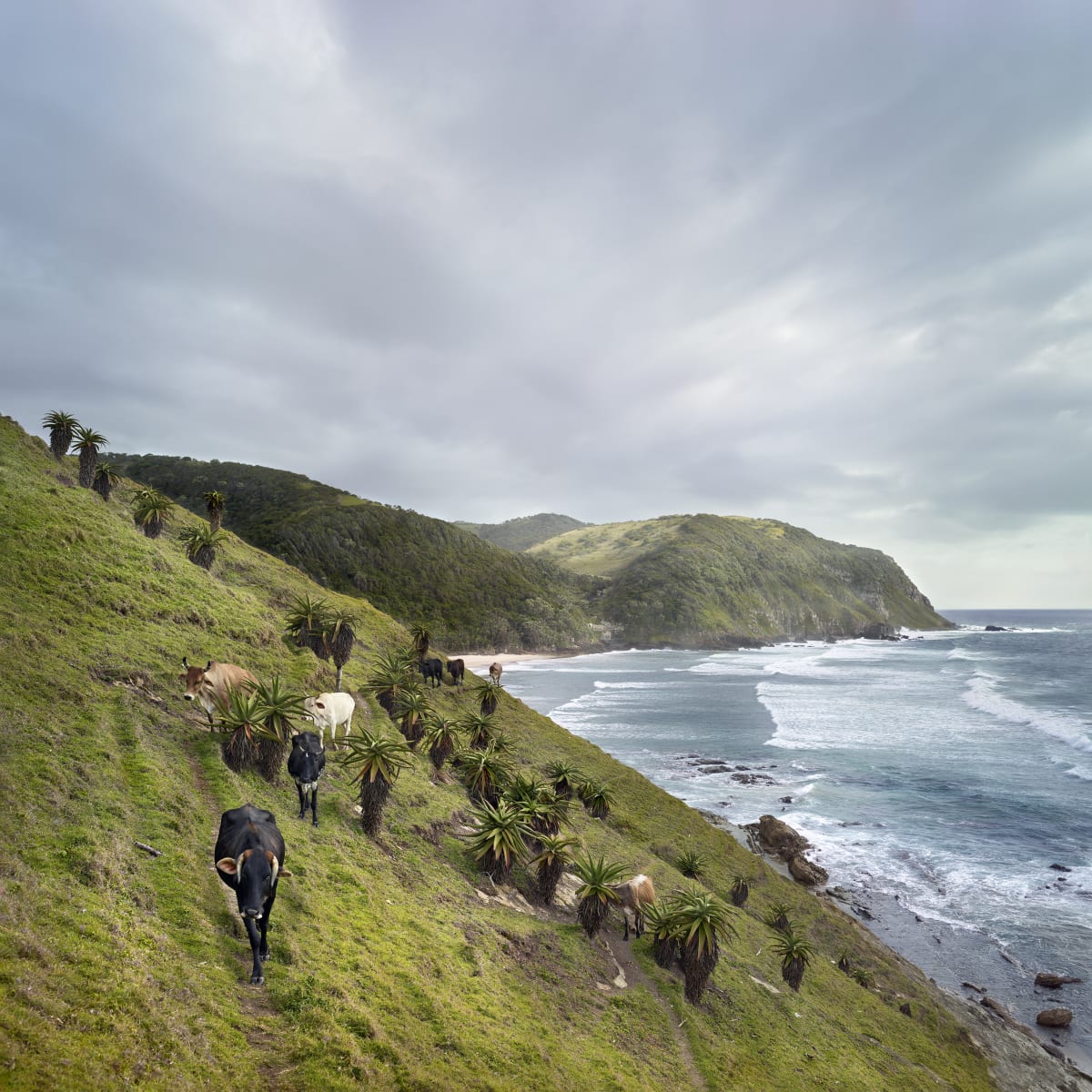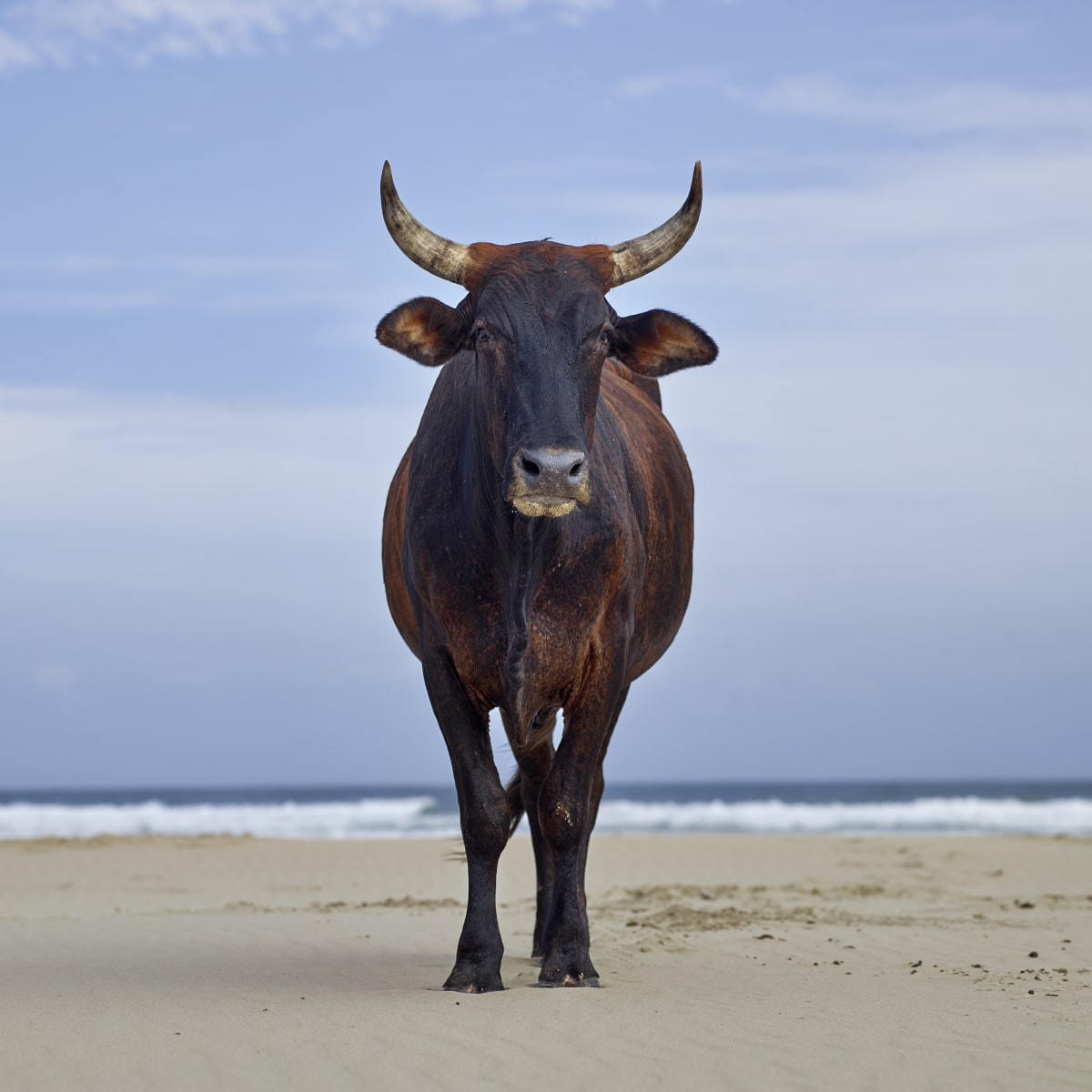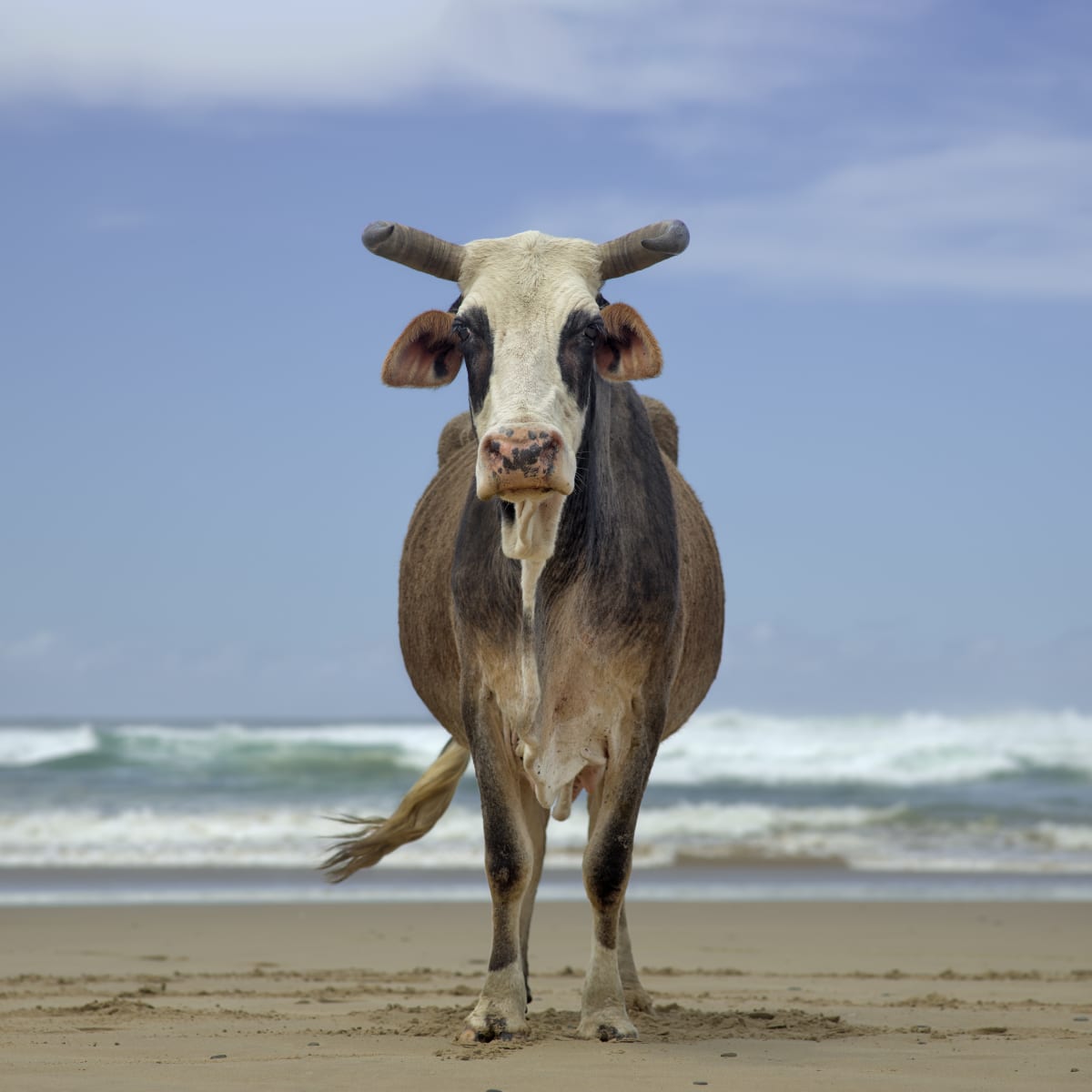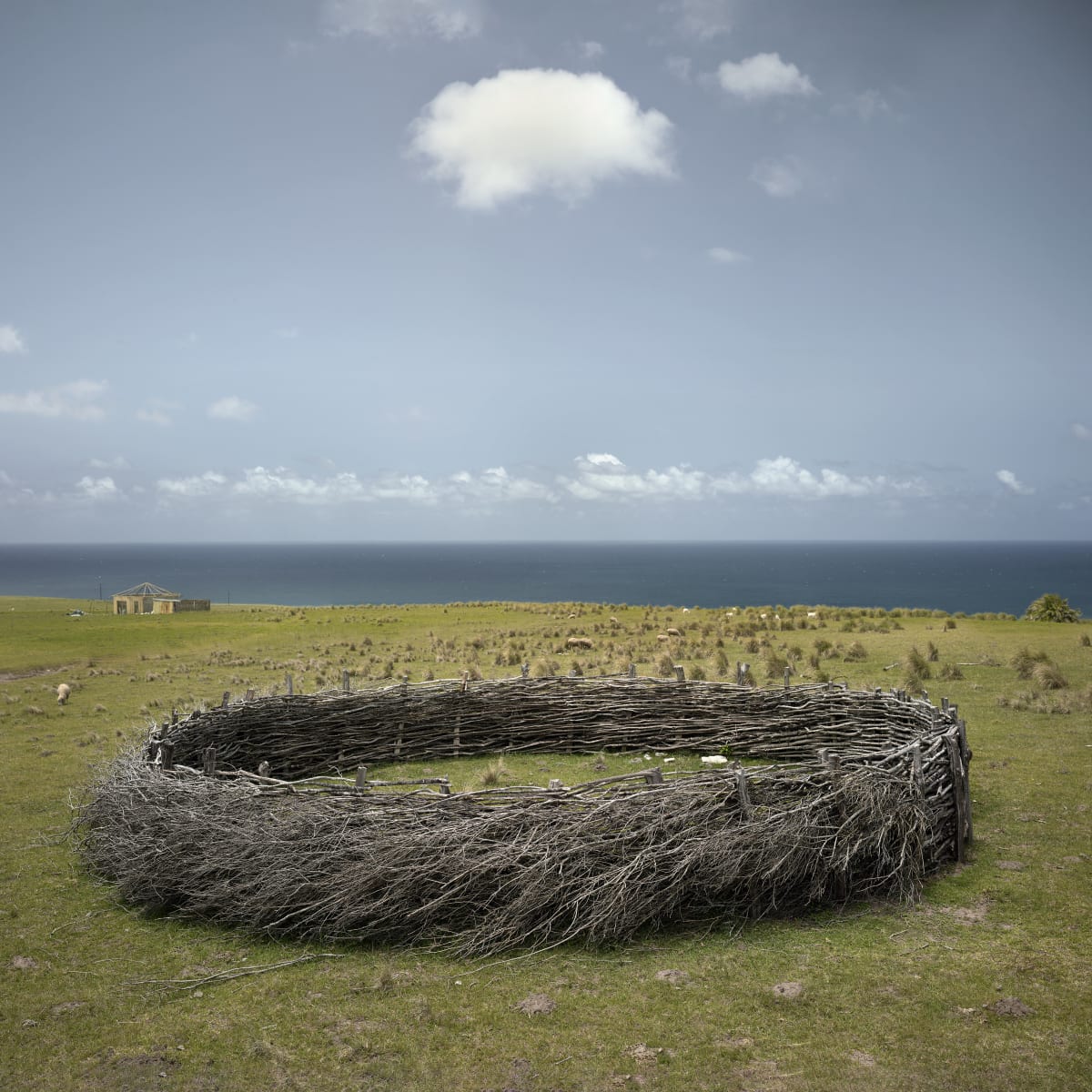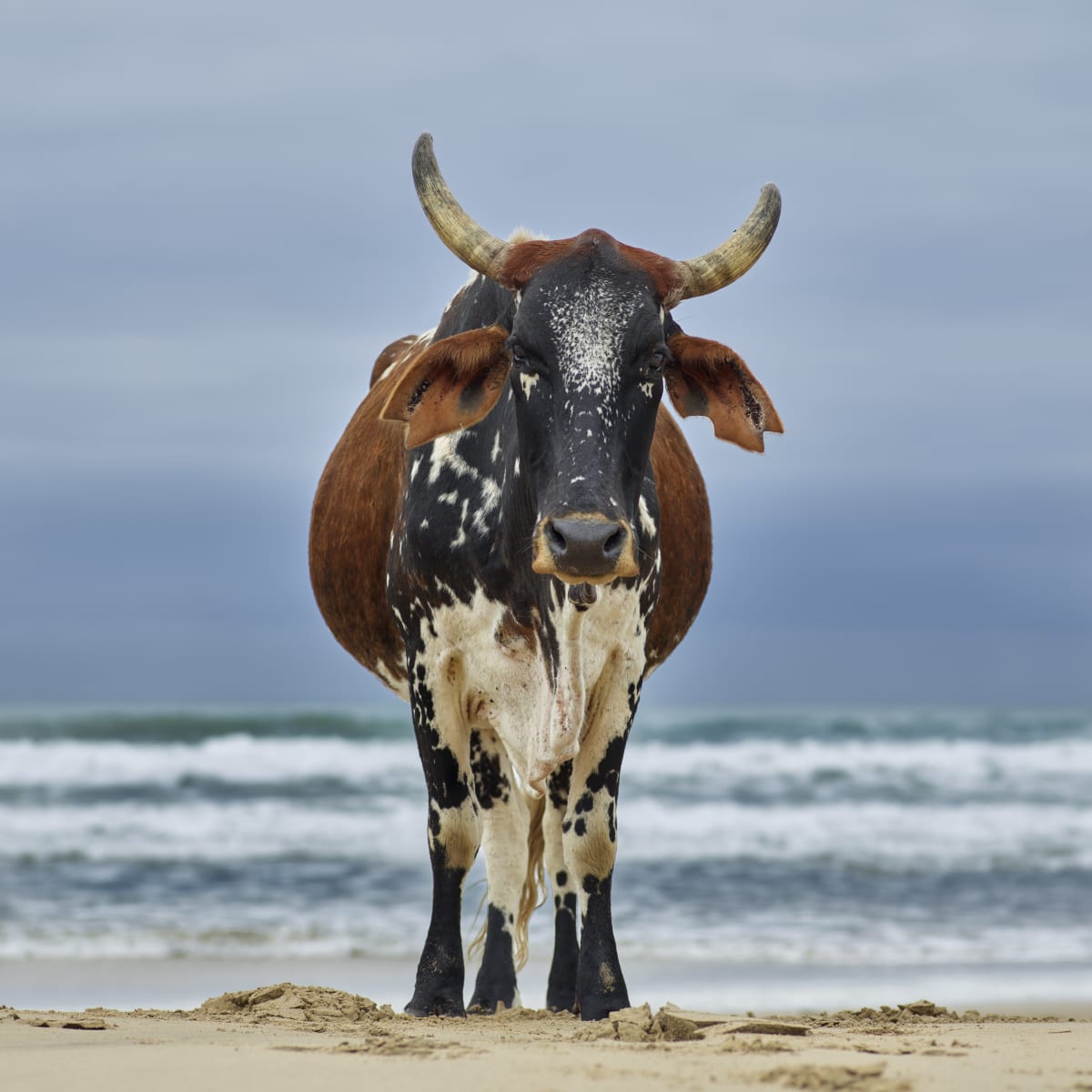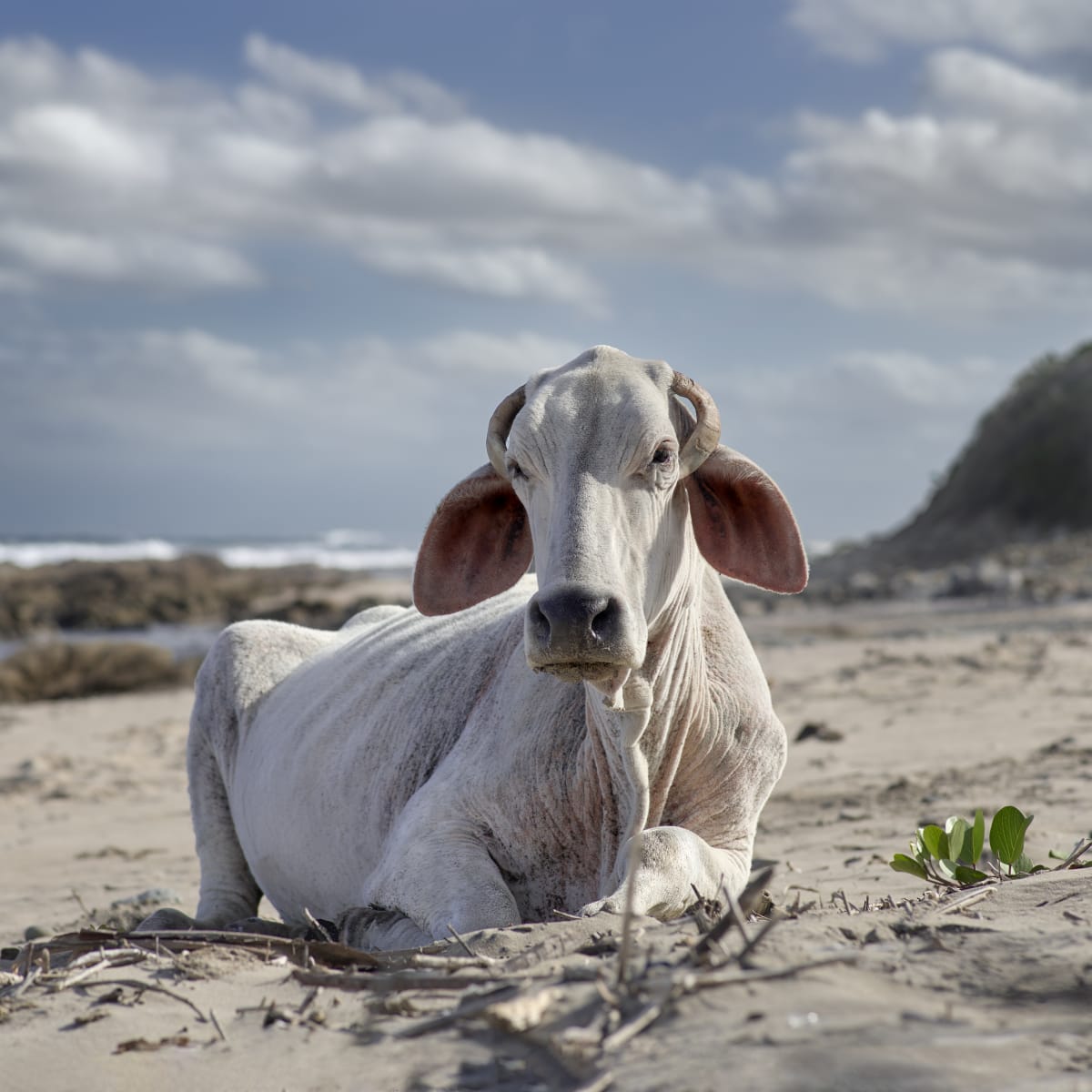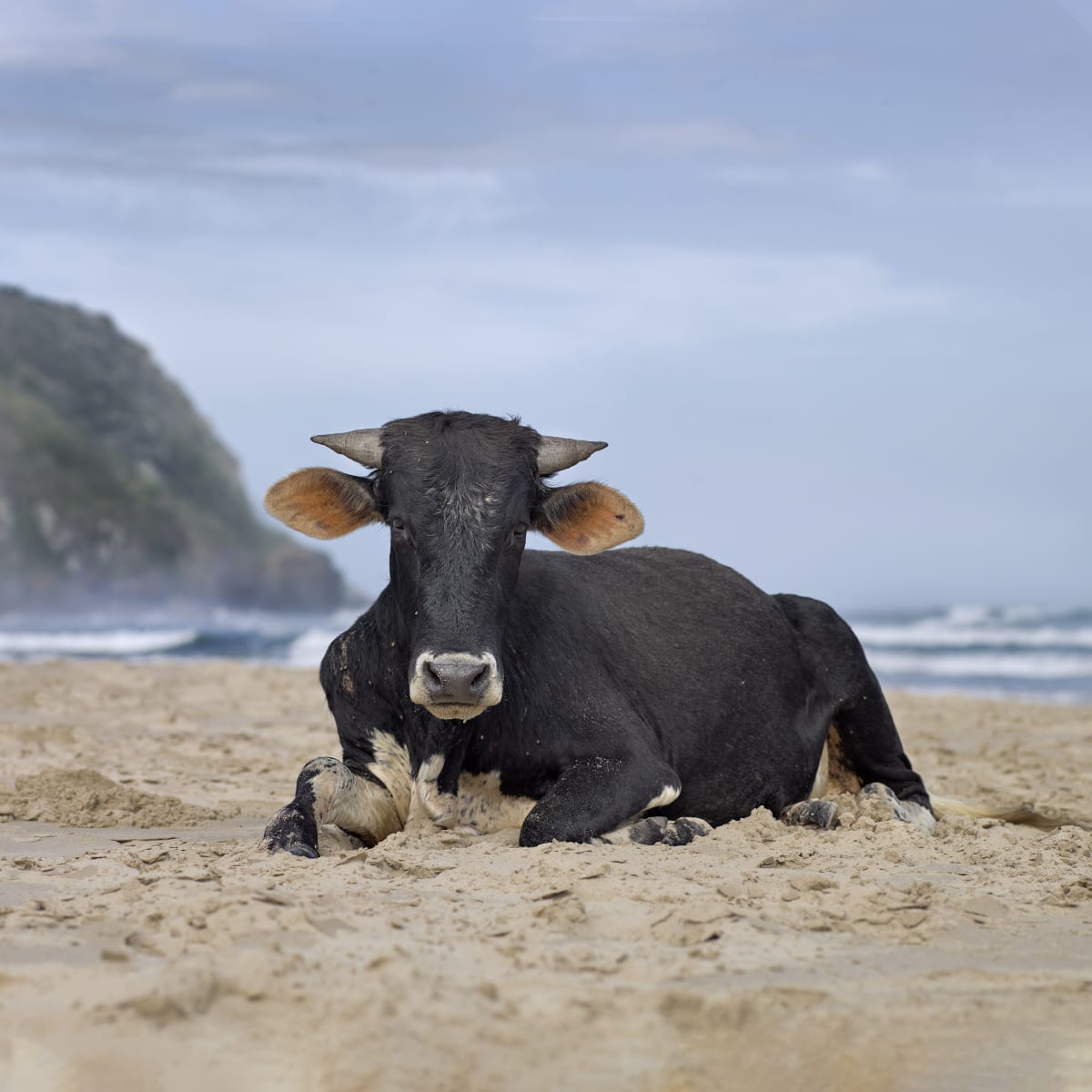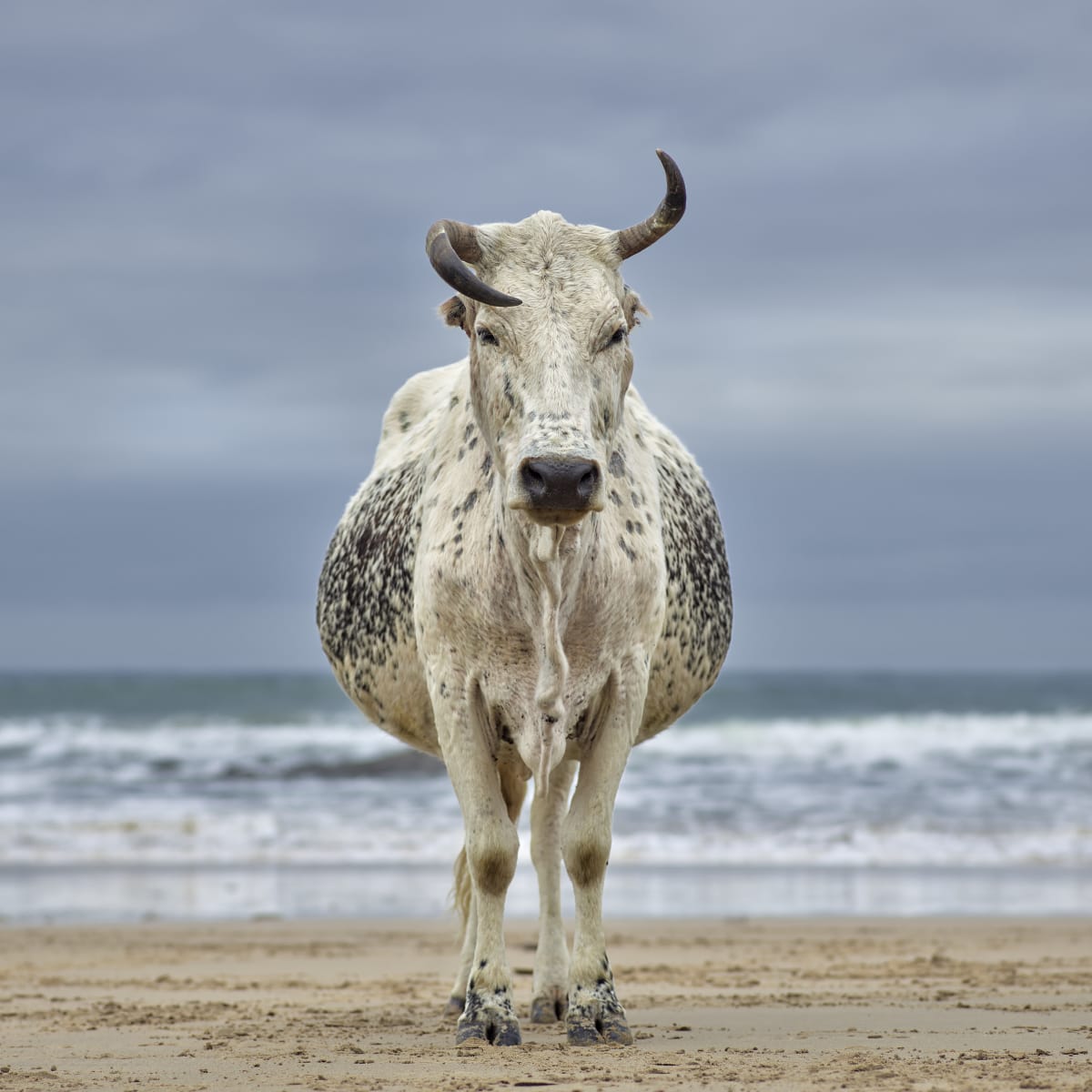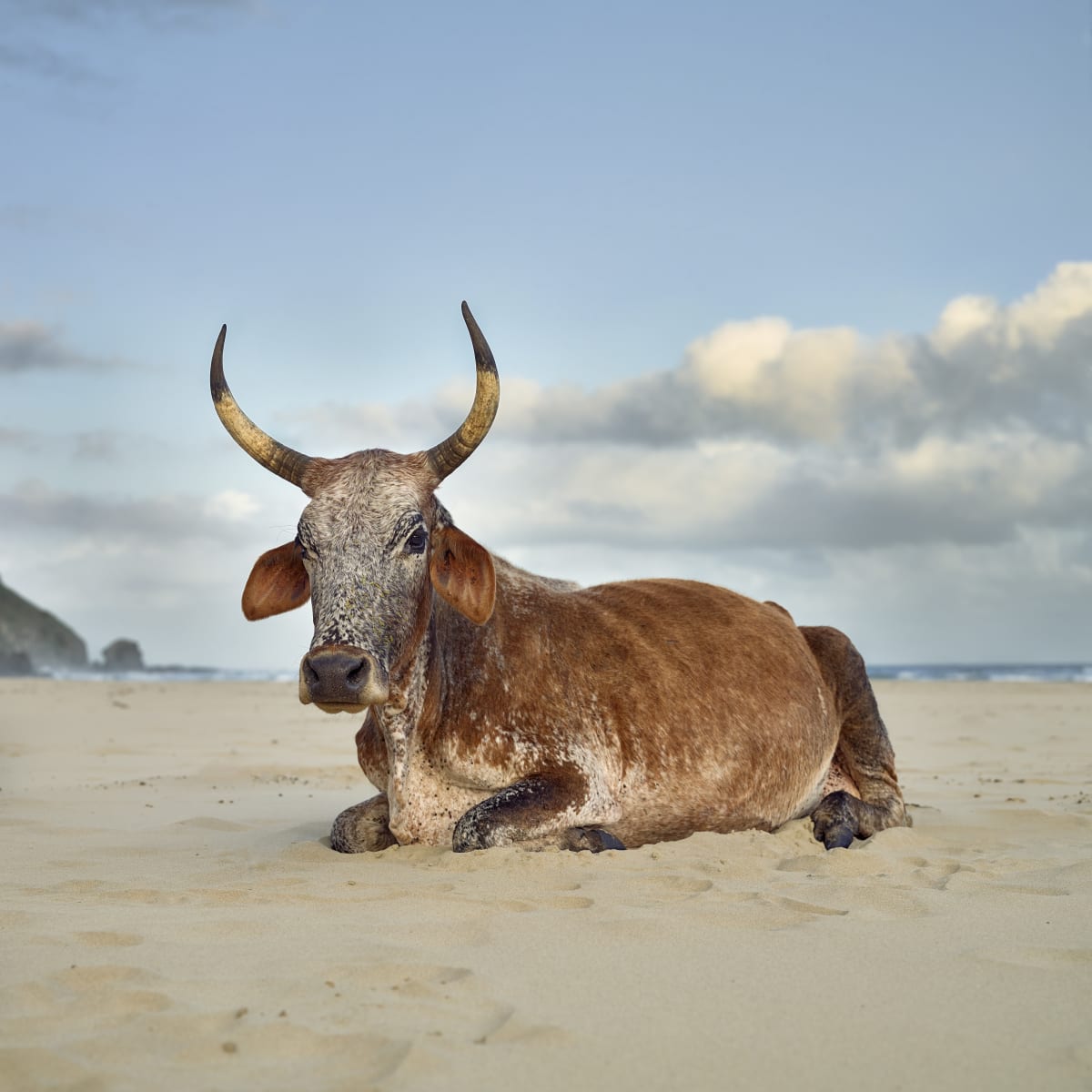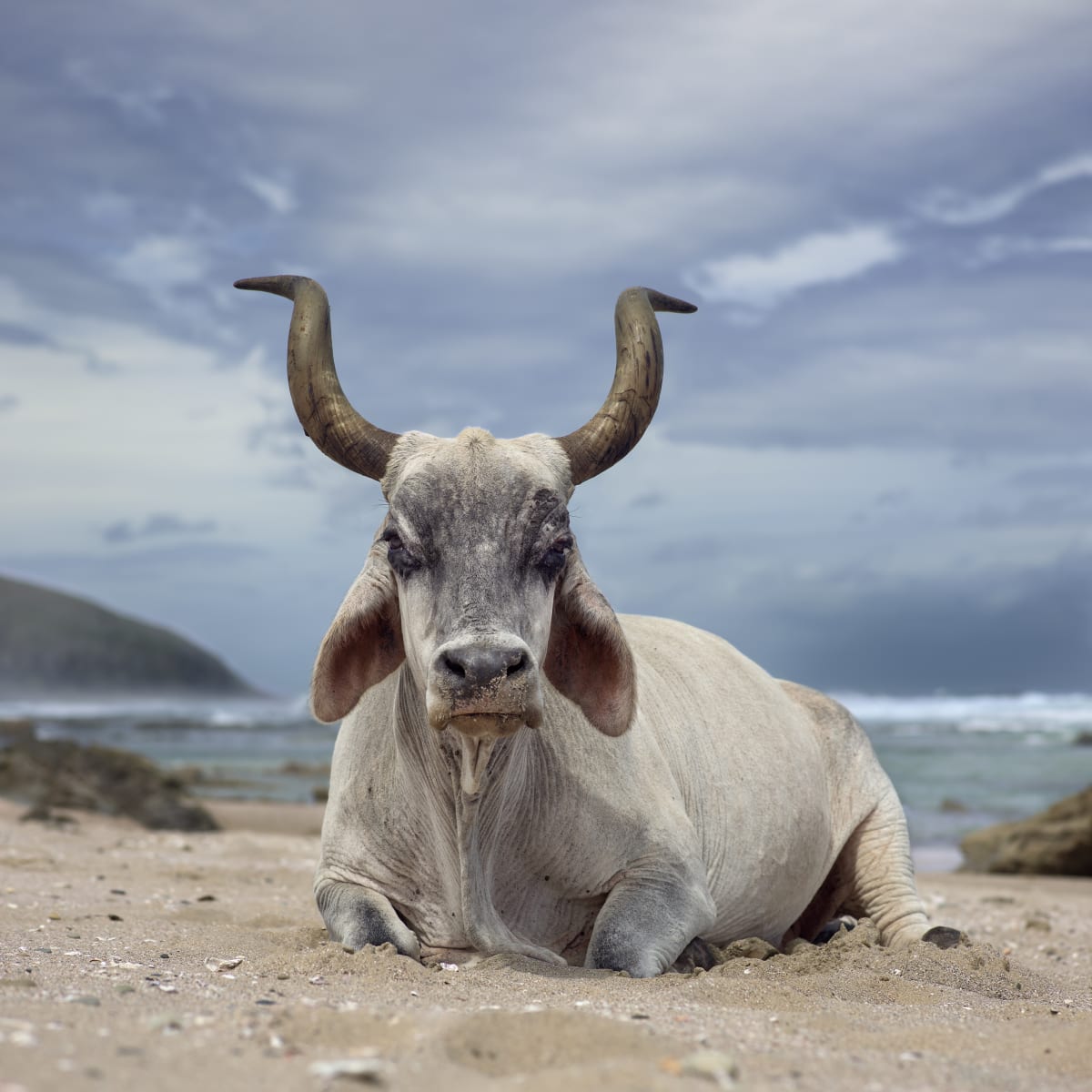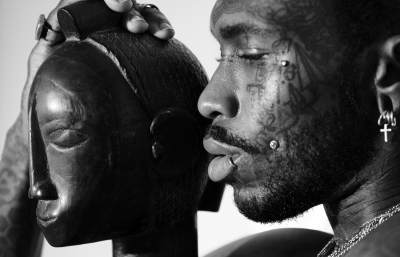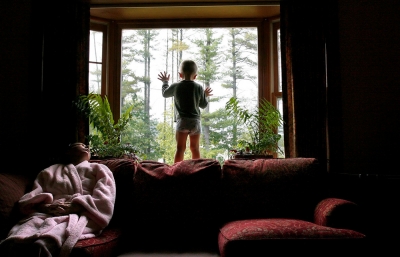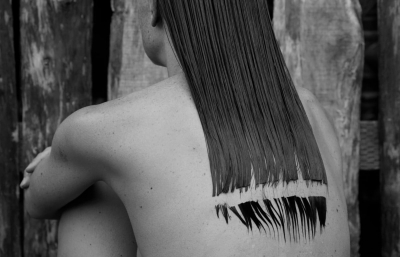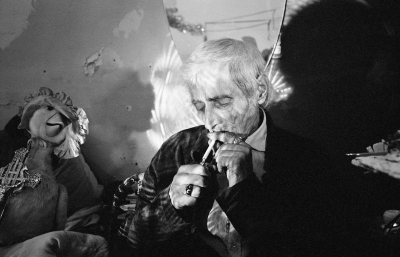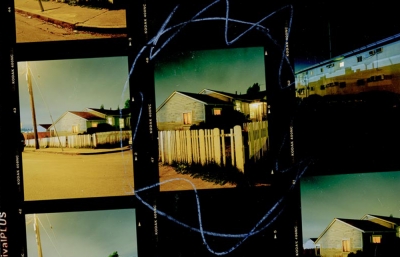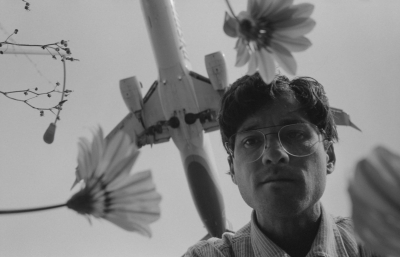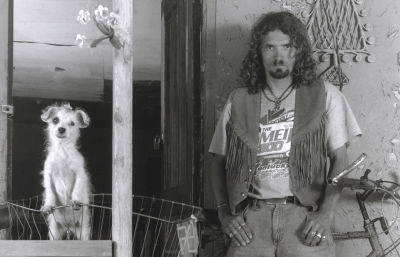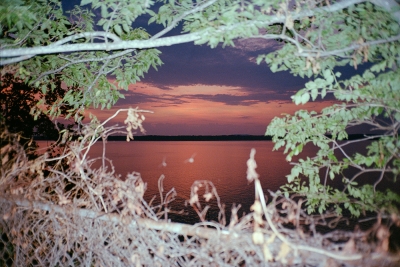If you visit the Wild Coast of the Eastern Cape of South Africa you may encounter some surprising beachside companions. Xhosa cattle in multiple shades of copper, auburn or mottled grey voyage across wide river mouths and languish along vast stretches of sand, overlooked by the rugged headland at Coffee Bay. Reports of their sightings by shipwrecked sailors date as far back as the 16th century. Today the cows continue to enjoy these scenic shores much in the same way as we do: trekking across sandy dunes, lazing on the plains, and bathing in the ocean for the sheer joy of it.
Indigenous to the Eastern Cape of South Africa, the history of these cows and the Xhosa people is long and at times devastating. In mid-19th century the Xhosa cattle here were in great decline. It started with the influx of white settlers from the Netherlands and their Friesland bulls, importing with them bovine lung disease which spread with disastrous effect. Amidst this strife, a young Xhosa girl had a vision of her ancestors giving instruction on how to overcome these new troubles. Legend said that upon the elimination of all livestock and crop, their ancestors would rise again from the sea bringing with them uncontaminated cattle, ultimately restoring the diminishing livelihood of the Xhosa people. Mass destruction ensued, leading to widespread famine, but alas no miracle came to pass.
Inspired by the Wild Coast’s forceful reminder of mankind’s complex relationship between human, animal and ocean, South African photographer Daniel Naudé made pilgrimages of his own for over a decade in search of the cattle that still roam this coastline. To achieve the desired shots Naudé spent hours - even days - tracking down new rumoured visitors, lying down next to them to have a silent conversation through the camera. The resulting series, The Bovine Prophecy (2018-2019), documents his intimate encounters with these majestic animals, their unmoving presence instilling a sense of timelessness and stoicism. Each subject received careful treatment; a patient and respectful approach that aimed to reveal not only their innate beauty but also the myriad of expressions provoked by this interaction.
As if to convey a warning one white cow stands firm on the Kei River mouth and sizes up the photographer head on, tail whipping in the wind as distant storm clouds roll in behind. Another sits shyly by the opening of the Mnenu River with legs tucked under, ears relaxed and short horns curved inwards, blushing at the attention. A few landscapes punctuate this new series setting the scene in a spectacular way, giving context to the surrounding regions of Pondoland and rural Transkei. A herd makes a slow pilgrimage through a sunny haze where the Nebelele River meets the ocean, tracks leading to the water and cattle disappearing into the haze. An iconic kraal – a circular enclosure for livestock made up of swirling branches - sits beneath a single cloud, like a purposefully positioned work of modern Land art.
In his typical microscopic attention to detail, Naudé is able to distinguish between the individual animals through defining physical characteristics and composures: the shapes of their horns, the patterns and colours in their coats, or how they acted towards him. His impeccably printed portraits instantly bring back memories of these encounters, and he speaks with emotion about how he was genuinely moved by them.
Naudé’s photographs are not just of cows on the beach. They are reverential portraits of the history of the region and inherent symbolism of our interdependent relationship with the natural world, executed in a truly beautiful way.
For more information, visit thephotographersgallery.org

